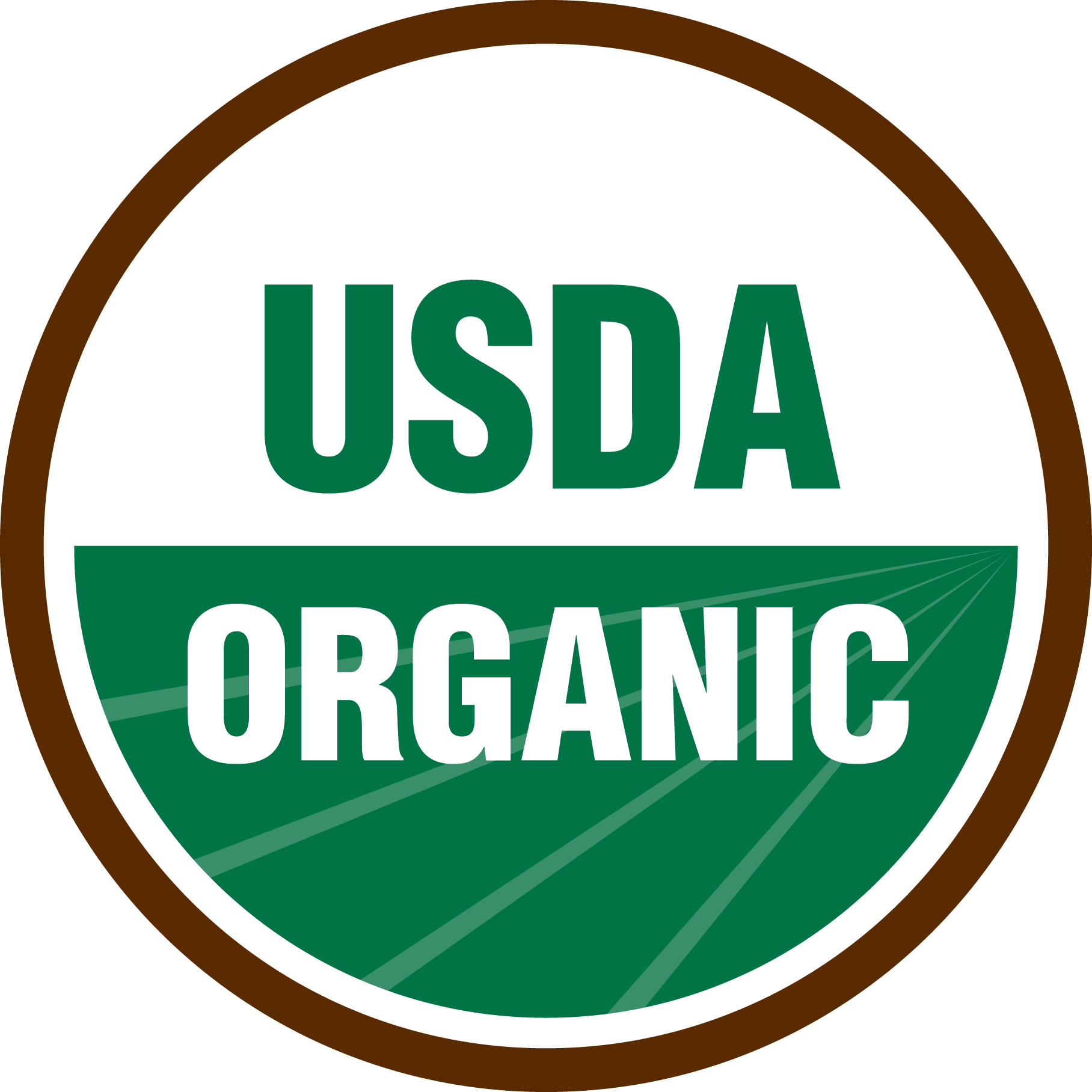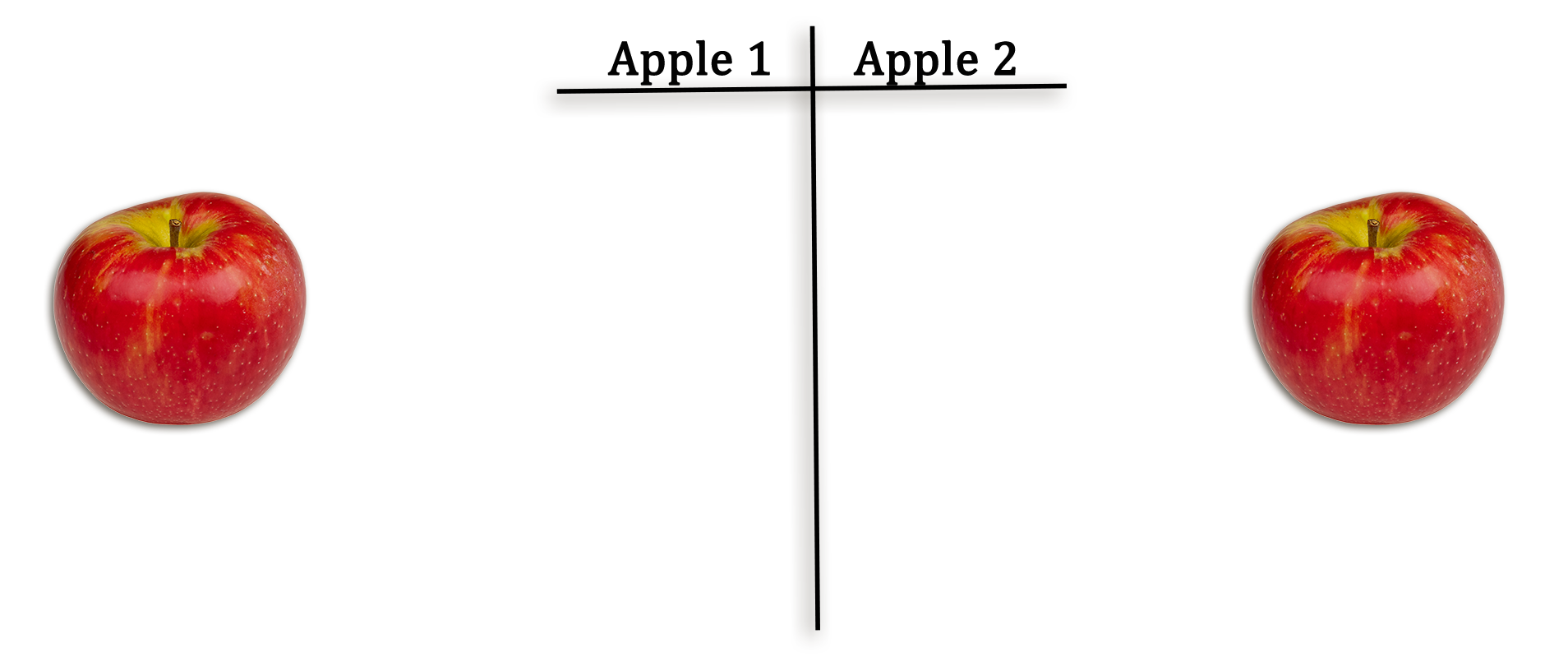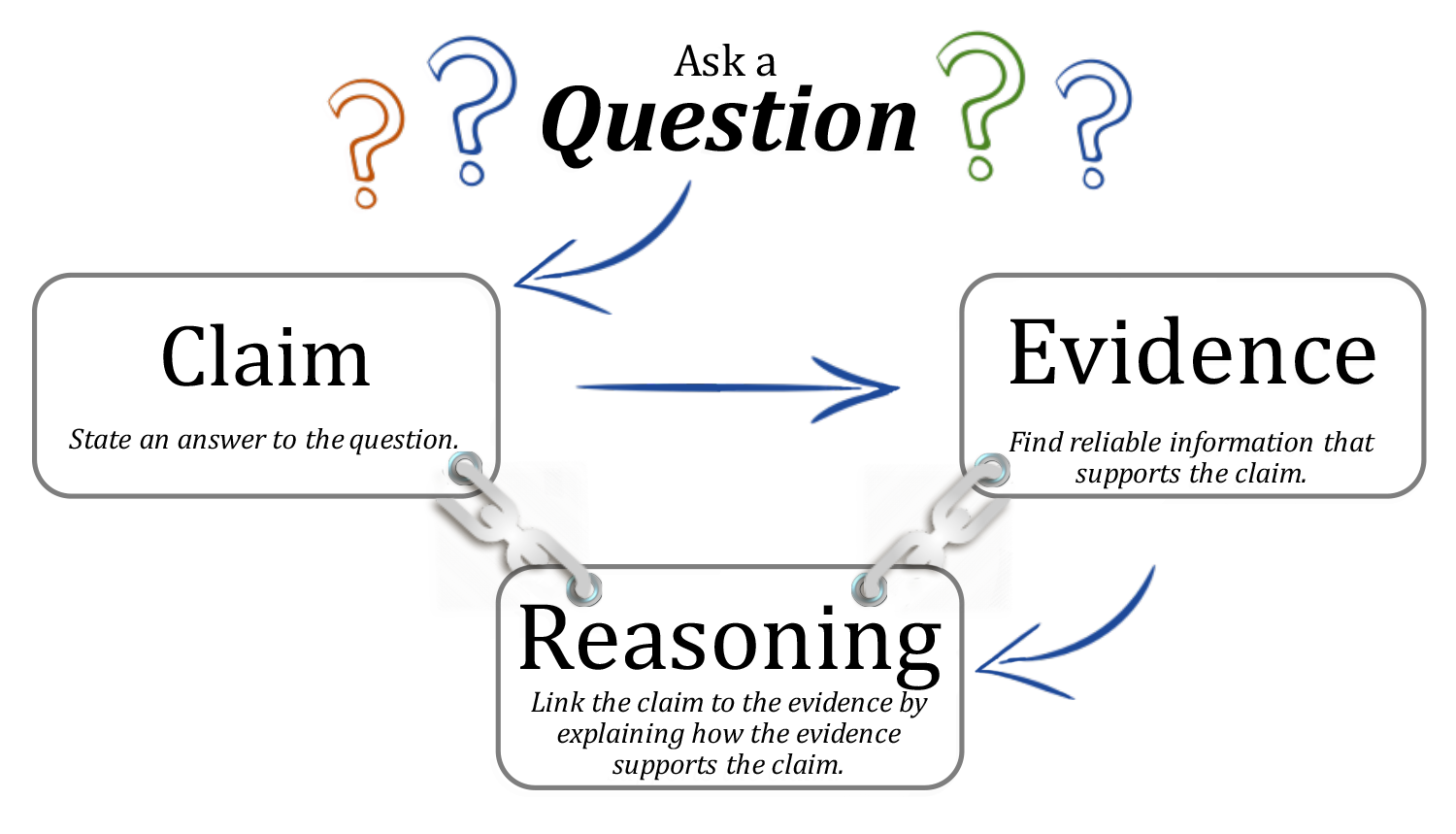Agricultural Literacy Curriculum Matrix
Lesson Plan
What's the Difference? A Look at Organic and Conventional Foods
Grade Level
Purpose
Using the claim, evidence and reasoning model, students will compare and contrast organic vs conventionally produced foods to discover the differences and similarities of each farm production style. Grades 6-8
Estimated Time
Materials Needed
- 1 organic apple and 1 conventional apple of the same variety
- Knife or apple slicer
- Cutting board
- Claim, Evidence and Reasoning- Organic and Conventional Food Production handout, 1 per student
- Give it a Minute: Organic and Conventional Farming video
- Taste Test Supplies:
- 10 paper plates labeled 1-10
- 5 organic food samples, sliced and prepared for individual taste tests
- 5 conventional food samples, sliced and prepared for individual taste tests
- Note: Choose food samples that you can purchase both an organic version and a conventional version. Choose foods of similar varieties or types to represent equivalent foods with different farming production methods.
- Toothpicks and napkins for taste tests
- Conventional and Organic Farming infographic
Vocabulary
conventional farming: a system of farming practices that may include the use of genetically modified organisms, synthetic fertilizers, pesticides and other chemical and biological inputs
organic: term used to classify farming methods that limit the use of some common practices such as biotechnology and types of fertilizer or pesticide
Did You Know?
- While organic-label foods are offered in each section of the grocery store, fresh fruits and vegetables are the top selling category of organically grown food.1
- Consumer demand for organically produced goods has shown double digit growth during most years since the 1990s.2
- Organic foods do not have a nutritional advantage over their conventional counterparts.3
- Synthetic pesticides approved for use on conventional and organic crops undergo the same rigorous scientific evaluation by U.S. EPA. The agency evaluates scientific data on the pesticide to ensure that when used according to label directions, the product will not harm people, non-target species or the environment.4
Background Agricultural Connections
Many questions can arise as consumers walk through the produce section of their local supermarket. In one hand, they have a conventionally grown Granny Smith apple. In the other hand, they have an apple labeled as "organic." Both apples are firm, shiny, and green. Both provide vitamins and fiber, and both are free of fat, sodium and cholesterol. The conventionally grown apple costs less and is a proven family favorite. But the organic apple has a label that says "USDA Organic." Does that mean it’s better? Safer? More nutritious? What are the differences between organic and conventionally-grown fruits and vegetables?
 The word "organic" on a food label refers to the way farmers grow and process agricultural products such as fruits, vegetables, grains, dairy products and meat.4 The green and white "USDA Organic" seal can be used on foods grown or produced within the parameters of the National Organic Program. The USDA Organic program is federally regulated. Organic labels can be used under the following circumstances:
The word "organic" on a food label refers to the way farmers grow and process agricultural products such as fruits, vegetables, grains, dairy products and meat.4 The green and white "USDA Organic" seal can be used on foods grown or produced within the parameters of the National Organic Program. The USDA Organic program is federally regulated. Organic labels can be used under the following circumstances:
- 100 percent organic - Products that are completely organic or made of all organic ingredients.
- Organic - Products that are at least 95 percent organic.
- Made with organic ingredients - These are products that contain at least 70 percent organic ingredients. The organic seal can't be used on these packages.
Most organic food costs more than conventional food products. Higher prices are due to more expensive farming practices, tighter government regulations and lower crop yields. Because organic farmers use limited types of herbicides or pesticides,6 many management tools that control weeds and pests are labor intensive. For example, organic growers may hand weed vegetables to control weeds in lieu of a synthetic herbicide. As a result, you may end up paying more for these vegetables.
Organic foods are not safer than conventionally-farmed foods. They meet the same quality and safety standards as conventional foods.5 Synthetic pesticides approved for use on both conventional and organic crops undergo the same rigorous scientific evaluation by U.S. EPA. The agency evaluates scientific data on the pesticide to ensure that when used according to label directions, the product will not harm people, non-target species or the environment.4 The difference lies in how the food is produced, processed and handled. You may find that organic fruits and vegetables spoil faster because they aren't treated with waxes or preservatives. Also, expect less-than-perfect appearances in some organic produce — odd shapes, varying colors and perhaps smaller sizes. In most cases, however, organic foods look identical to their conventional counterparts.
If a food is not labeled "organic" it was likely produced using conventional farming practices. Conventional farms have fewer restrictions and can employ technological innovations to improve crop quality and decrease loss due to pests, weeds, and disease. Conventional farms may use genetically modified seed, synthetic pesticides/herbicides, and synthetic fertilizers.
Engage
- Ask students questions to generate thought, "What is the definition of the word, organic?" "Where do you see the word organic most?" Allow students to offer several answers directing students to think about their food and the labels they see in the grocery store.
- Ask for two student volunteers. Inform them that one will be doing a taste test and the other will serve as a scribe.
- Reveal two apples to the students labeled 1 and 2. Inform students that one apple was produced using organic farming practices and the other was produced using conventional farming practices. (Be sure you keep note of which apple is organic and which is conventional.)
- Draw a T-chart on the board. Label one side "Apple 1" and the other side "Apple 2." Instruct the scribe to list all of the adjectives that are used during the observation.
- Ask the other student volunteer to carefully examine each apple and describe them to the class. The volunteer should visually observe, taste, and touch the apple. Cut the apples with a knife or an apple slicer once the exterior of the apple has been thoroughly examined. (Remind the scribe to be recording the description of each apple.)
- Once the observation is complete, the student volunteer(s) should select which sample they think is the organic apple and which is the conventionally farmed apple. Give the student an opportunity to explain why they made their choice.
- Reveal to the students which apple is which and have a short discussion that answers the questions:
- Was there a difference in physical appearance? (Size, Shape, Color, Texture)
- Is there an observable difference between the two samples that you can see, feel, or taste?
- What are your perceptions about both methods of farming?

Explore and Explain
- Give each student one copy of the Claim, Evidence and Reasoning- Organic and Conventional Food Production handout.
- Now that students have been briefly introduced to the terms conventional and organic, they will begin to develop a clear definition of the terms as they progress through the CER model.
- Have students brainstorm the questions they have concerning the two farming practices. Examples could include:
- Are organic foods safer or more nutritious than conventionally-grown foods?
- Is one method "better" for farmers?
- Is one method "better" for the environment?
- Is there a measurable difference between a conventionally grown food and an organically grown food?
- Does organic/conventional food taste better?
- Introduce the Claim, Evidence, and Reasoning model. Explain that after a question is asked, this model can be used to find a credible answer to a question by using the following steps:
- Claim: State a direct response to the question.
- Evidence: Find reliable information that supports the claim.
- Reasoning: Link the claim to evidence by explaining how the evidence supports the claim.

- Instruct students to complete two of the four steps in the CER model on the first page of their worksheet. First, they should select and record one question they would like to answer about organic and conventional food production practices (step 1). Next, they will formulate a claim by answering their question using their best guess and background knowledge. This should also be recorded in the corresponding box on their handout (step 2).
- Let students know we will come back to the evidence (step 3) and reasoning (step 4) portions momentarily. First we will spend some time gathering evidence and learning about the farming practices.
- As students participate in the following activities, they should be filling out the Venn Diagram on page 2 of their handout listing the similarities and differences found in the farming production styles.
- Show the video, Give it a Minute: Organic and Conventional Farming.
- Next students will participate in a taste test. Prior to class choose five different foods that you can purchase both an organic label product and a conventional product. Prepare the samples and label them 1-10 placing like foods next to each other (e.g. strawberries #1 and #2, carrots, #3 and #4, etc.) and selecting a random order for organic vs conventional. Be sure to keep a key.
- Inform students that they will be examining and tasting five different foods. Each food will have both an organic and a conventional sample. Direct students to page three of their handout. Explain that for every food they will observe and taste each sample, record their observations (columns 1-3), determine if it is a conventional or organic food product (column 4), and then explain their choice (column 5).
- After all samples have been evaluated and identified by the students, reveal the correct answers. Have students place a star next to the samples that they guessed correctly.
- Hold a class discussion about the differences and similarities observed.
- Note to Teacher: With a 50/50 chance, students will guess some of the samples correctly. As your students discuss differences they could taste, discuss reasons why. In many cases it will not be due to organic vs conventional farming practices. Possible reasons for differences include the use of different plant varieties or cultivars and different packaging or processing methods. Ripening may also impact taste. For example, a tomato that was vine ripened will likely taste better than one that was picked and ripened during transport to the grocery store.
- Direct students back to their Venn Diagram. Have students record the differences and similarities they observed during the taste tests and review the following as a class, in small groups, or individually to complete the Venn Diagram:
- Assign students to complete their handout by answering the reflection questions on the last page and returning to the first page to complete the "Evidence" and "Reasoning" sections of their CER models.
Elaborate
-
Listen to the NPR broadcast, Organic Pesticides: Not An Oxymoron. Discuss student thoughts and the impact of the "organic" label.
-
Assign student groups to create a multimedia presentation (stop motion video, video, prezi, etc.) about a specific crop. Students should highlight the growth of the plant from start to finish and highlight the differences between conventional and organic production of their crop.
-
Compare and contrast the environmental impact of organic vs conventional farming.
-
Have students explore some of their favorite fruits and vegetables using the interactive Pesticide Residue Calculator. Following the prompts on the website, students can read about pesticide residues found on produce, select their age category and then click on numerous fruits and vegetables to discover how many servings of that particular fruit or vegetable must be consumed in one day to experience a negative response.
-
Discuss and research best practices for washing fresh produce.
-
Discuss the negative impact specific labels and marketing could have on overall consumption of fruits and vegetables. Whether organic or conventional, a healthy diet should consist of a variety of fruits and vegetables.
-
Explore statistics for chicken and dairy products. Discover how food products are advertised, compare prices, and evaluate the most common consumer choices.
Evaluate
After conducting these activities, review and summarize the following key concepts:
- The nutrition and overall food safety of organic and conventionally produced food is the same. The difference lies in the production methods used on the farm.
- The USDA Organic program is federally regulated with specific requirements for farmers to meet in order to label their food product as "organic."
- A variety of farming methods can be used to produce a safe and nutritious food supply.
Sources
This lesson was adapted using materials prepared as part of the Syngenta STEM Summer Fellowship Program.
- https://www.ers.usda.gov/topics/natural-resources-environment/organic-agriculture/organic-market-overview.aspx
- https://www.ers.usda.gov/topics/natural-resources-environment/organic-agriculture/
- https://www.health.harvard.edu/staying-healthy/should-you-go-organic
- https://www.safefruitsandveggies.com/regulations/organic
- http://www.mayoclinic.com/health/organic-food/NU00255
- http://www.epa.gov/pesticides/food/organics.htm
Recommended Companion Resources
Author
Organization
| We welcome your feedback! If you have a question about this lesson or would like to report a broken link, please send us an email at [email protected]. If you have used this lesson and are willing to share your experience, we will provide you with a coupon code for 10% off your next purchase at AgClassroomStore. |
